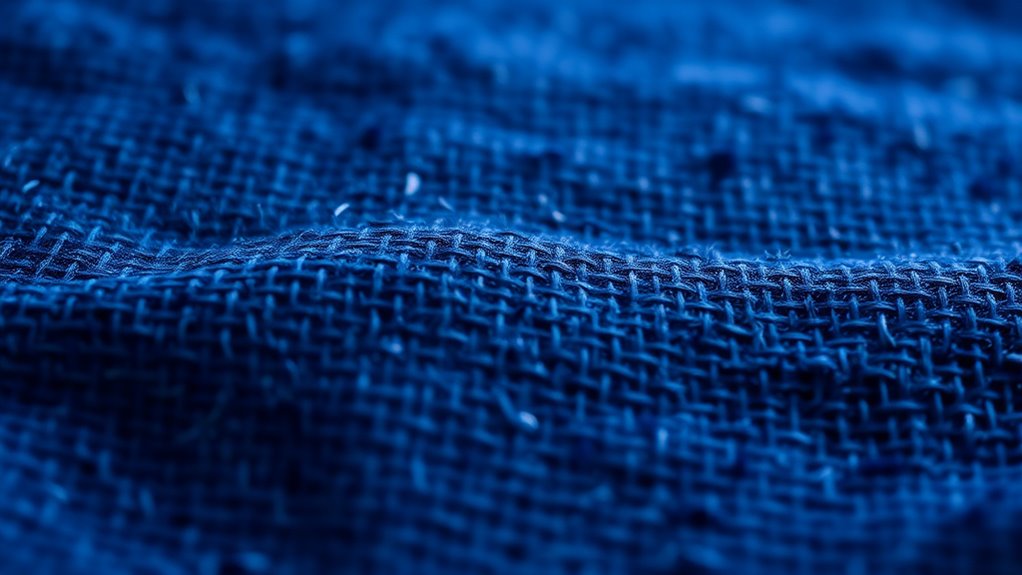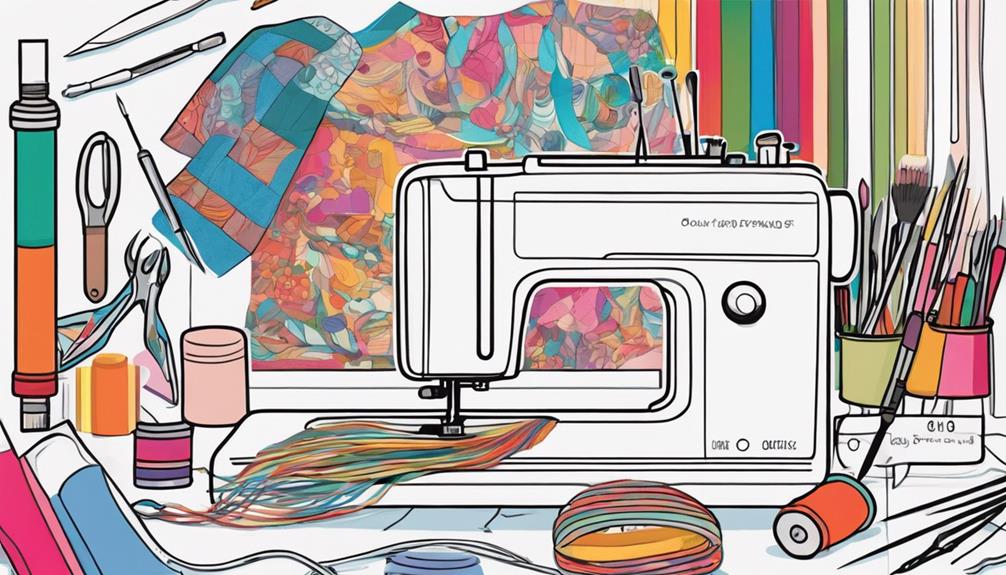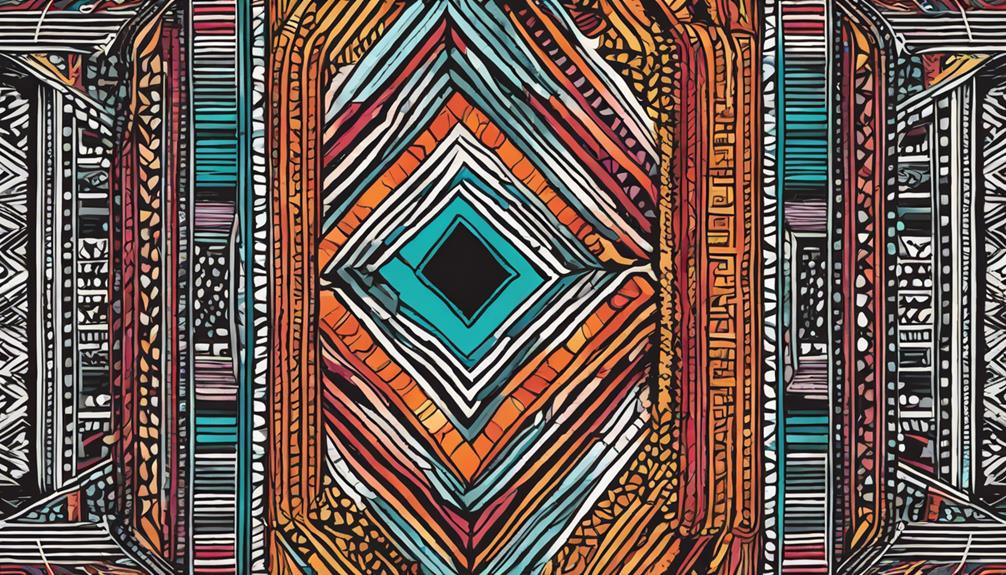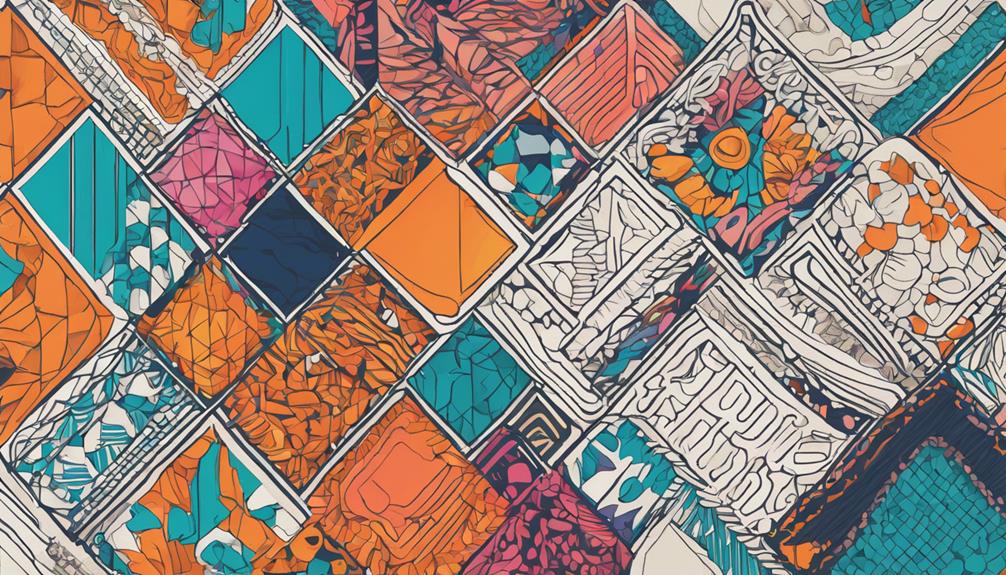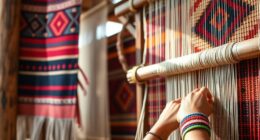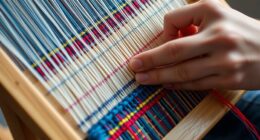Ancient indigo dye still outshines modern pigments because it’s incredibly durable, with colors that last for centuries, unlike many synthetic dyes that fade quickly. The traditional methods used are not only eco-friendly but also hold deep cultural and spiritual significance. These techniques and natural ingredients create richer, more complex hues that modern dyes can’t replicate. If you explore further, you’ll discover how these timeless practices continue to inspire modern craftsmanship and sustainability.
Key Takeaways
- Ancient indigo dyes are highly durable, maintaining vibrant colors over centuries, unlike many modern synthetic pigments that fade quickly.
- Traditional techniques produce natural dyes with complex, rich hues that surpass the depth of modern synthetic colors.
- Indigenous indigo methods are environmentally sustainable, avoiding harmful chemicals used in synthetic dye production.
- The cultural and spiritual significance of ancient indigo enhances its value beyond mere aesthetics.
- Preservation of traditional dyeing practices supports handcrafted artisanal products with authentic historical and ecological authenticity.
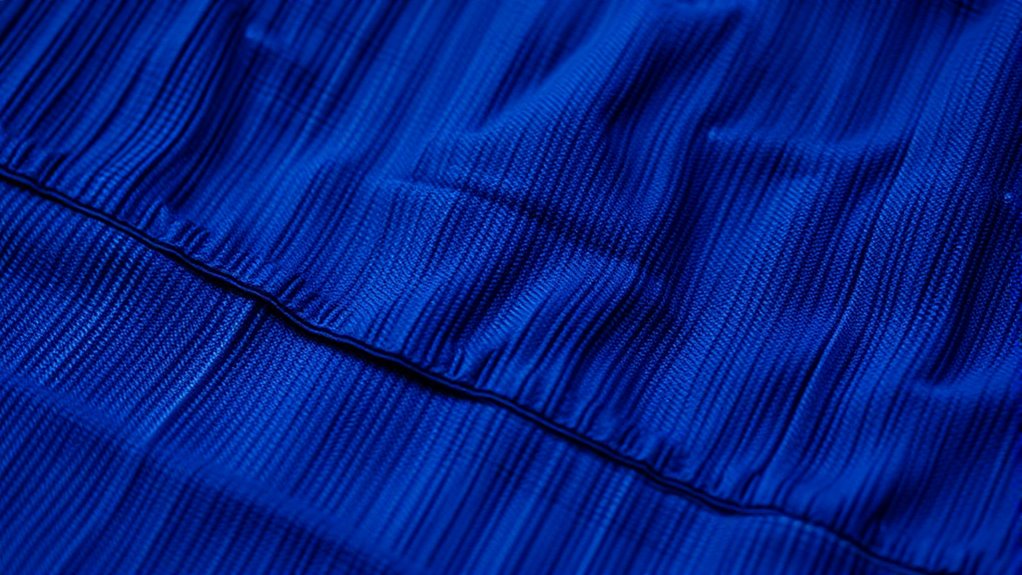
Have you ever wondered how ancient civilizations created such vibrant and long-lasting blue fabrics? The secret lies in their mastery of natural dyeing techniques, particularly with indigo. Unlike synthetic dyes today, these natural dyes were derived from plants, and their production involved meticulous processes that connected cultures across centuries. The use of indigo in textiles carried more than just aesthetic appeal; it held deep cultural and spiritual significance. For many ancient societies, blue symbolized the heavens, spirituality, and protection. This rich symbolism gave the dye a profound historical importance, elevating it beyond simple decoration to an emblem of identity and tradition. You might find it fascinating that the methods used to produce indigo dye were passed down through generations, often guarded as valuable knowledge within communities. These techniques required careful fermentation and skillful handling, ensuring that the resulting fabric maintained its vibrant hue over centuries. When you consider the durability of these ancient textiles, it’s clear that natural dyeing with indigo created colors that outlast many modern synthetic dyes. Today’s pigments often fade or degrade over time, yet indigo-dyed fabrics from thousands of years ago still showcase their deep, rich color. This longevity isn’t just a testament to the quality of the dye itself but also to the cultural importance placed on preserving these textiles. The historical significance of indigo dye extends beyond aesthetics; it represents a link to the past, a testament to human ingenuity, and an enduring symbol of cultural identity. Additionally, the traditional methods of indigo dyeing often involved environmentally sustainable practices, emphasizing the ecological benefits of natural dyes over synthetic alternatives. When you hold a piece of ancient indigo-dyed fabric, you’re touching a piece of history—an artifact that embodies tradition, craftsmanship, and cultural values. Modern pigments, while often more convenient and cheaper, rarely match the depth and complexity of natural dyes like indigo. They lack the same level of cultural resonance and tend to fade more quickly. The revival of natural dyeing techniques and appreciation for traditional crafts underscore how much value there is in these ancient practices. They serve as a reminder that beauty and durability can be achieved through sustainable, traditional methods. So, as you explore the world of dyes, remember that the vibrancy of ancient indigo fabrics is no accident. It’s the result of centuries of knowledge, cultural significance, and a commitment to natural dyeing that continues to outshine many modern pigments today.
Frequently Asked Questions
How Does Ancient Indigo Dye Maintain Color Over Centuries?
Ancient indigo dye maintains its color over centuries because of natural fermentation processes that produce a stable, insoluble pigment. You’ll find that its pH stability helps preserve the vibrant hue, even after long periods. Unlike modern synthetic dyes, this natural method creates a durable compound that bonds well with fibers, ensuring the rich blue stays vivid over generations. This combination of fermentation and pH stability is key to its lasting brilliance.
Are There Environmental Benefits to Using Traditional Indigo Over Synthetic Dyes?
Imagine choosing a path lined with ancient trees rather than synthetic roads. Using traditional indigo supports eco-friendly practices and sustainable sourcing, reducing chemical waste and pollution. Unlike modern dyes, it’s made with natural methods that protect ecosystems. Your choice to embrace this timeless dye helps preserve biodiversity and minimizes environmental harm, proving that respecting nature’s balance can be as vibrant as the color itself.
What Cultures Historically Used Indigo Dye in Their Textiles?
You’ll find that many cultures, like the Egyptians, Indians, and West Africans, historically used indigo dye in their textiles. Its cultural significance is profound, symbolizing status and spirituality. These societies developed unique dyeing techniques, such as vat dyeing and resist methods, to achieve vibrant, lasting colors. Indigo’s role in traditional crafts highlights its importance, and its enduring appeal outshines modern synthetic dyes, blending history with artistry in textile traditions.
How Does the Dyeing Process of Ancient Indigo Compare to Modern Methods?
Imagine revealing a secret dance between nature and art; that’s what ancient indigo dyeing offers. You dip textiles into natural fermentation vats, embracing traditional techniques that foster rich, deep hues. Unlike modern methods with chemicals, this process allows the dye to bond intimately with fibers, creating vibrant, lasting colors. The experience connects you to centuries of craftsmanship, making each piece a timeless masterpiece woven from tradition’s enduring magic.
Can Modern Technology Replicate the Depth of Color Found in Ancient Indigo?
You might wonder if modern technology can replicate the depth of color in ancient indigo. While advances in natural dyeing methods aim to mimic traditional processes, achieving the same rich, layered color depth remains challenging. Modern techniques often lack the nuanced aging and fermentation steps that give ancient indigo its vibrant, complex hues. So, despite technological progress, the authentic depth of color from natural dyeing still holds a unique appeal.
Conclusion
You might think modern pigments are impressive, but ancient indigo dye’s brilliance has stood the test of time like a legendary gemstone glowing brighter than any modern marvel. Its deep, mesmerizing hue holds secrets of centuries, outshining synthetic shades with a richness that makes every fabric feel alive and enchanted. When you wear or see indigo, you’re not just looking at color—you’re witnessing a vibrant history that outshines the brightest modern creations, shining forever in the tapestry of time.

